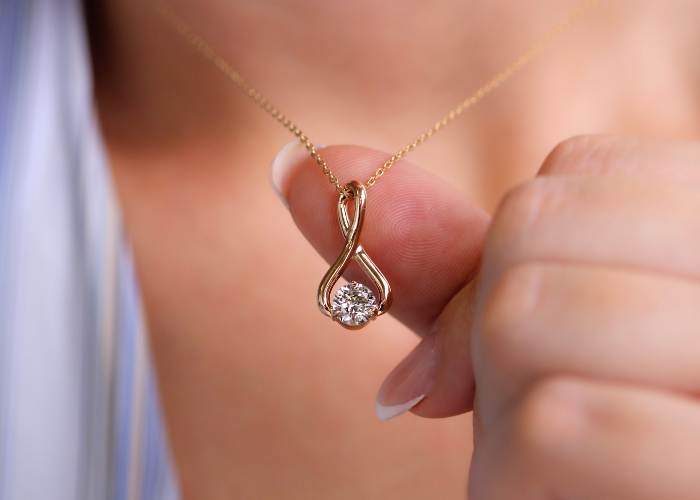The cremation process or crematorium service is referred to as a kind of ultimate disposition or treatment of a deceased one’s remains. Through this process, the body of a person who has passed away is reduced to cremation ashes using a special type of physical and chemical process that involves combustion and oxidation.
Cremations are processed in dedicated facilities that are called crematories. The process is supervised by a certified crematory operator and funeral cremation director. After the funeral cremation process, the cremation ashes of the deceased are returned to the next of kin for ultimate burial, entombment, or inurnment.
As of 2018, funeral cremation is the final disposition choice for roughly 50% of deaths in the United States, while this number is even higher than 70% in Canada. The statistics related to cremations in various parts of the world depend on factors such as religious beliefs, cultural traditions, and financial considerations.
Steps in a Cremation Process
Several main steps are taken during a funeral cremation process to ultimately turn a deceased one’s body into cremation ashes.
Step 1: The deceased is placed in a cremation container that is completely enclosed, rigid, leak-resistant, and combustible.
Step 2: The facility staff checks all the paperwork to confirm the identity of the deceased. They assign a cremation number/id and stamp it onto a stainless steel disk that remains with the deceased throughout the entire cremation process.
Step 3: The deceased is removed from the storage unit and taken with their container to the cremator unit before rechecking their stainless disk.
Step 4: The container is placed inside the primary chamber of the cremator. The stainless disk with the id/number is also placed inside the cremator.
Step 5: The door is closed and the cremation process is monitored carefully. The process lasts between 30 minutes to over 2 hours depending on the body size and stored heat in the chamber.
Step 6: After the cremation process is complete, the door is opened and the identification is checked again using the stainless disk. The bone fragments are carefully swept out into a cooling tray where they are cooled down and taken to a processor.
Step 7: The processor uses blades to pulverize the bone remains until they are less than ⅛” in size.
Step 8: The cremation ashes are ultimately transferred to a strong plastic bag and placed in an urn or a temporary container. Identification is checked again and the stainless disk is placed in the container. The urn is then stored for the family’s retrieval.
Different Types of Cremation
Funeral cremations and crematorium services are getting increasingly popular around the world due to the wide variety of benefits they provide. But, did you know that there is not just one type of cremation?
Cremations can be divided into three main types: traditional, memorial, and direct cremation. The essential differences between these types of cremation are their price, planning, and timeline. Read the descriptions below to find which type is the best one for your deceased one.
1. Traditional Cremation
Traditional funeral cremations are probably the same things that come to your mind when you hear the word “cremation.” They are highly similar to conventional burial as they both involve a funeral service followed by cremation. They commonly have a visitation or wake within two or three days of death.
Traditional cremations are usually more expensive than other types of cremations because the deceased’s body is present throughout the funeral, wake, and visitation. In such a case, you are going to need embalming and casket costs.
Embalming is the process in which the deceased’s body is preserved for viewing. Also, funerals and visitations force you to use a casket instead of a simple cremation box or urn.
After the funeral, cremation ashes can be buried, entombed, scattered, or displayed (more on this later). Some of these approaches might require spending more money, like burial or interment.

2. Memorial Cremation
The only difference between memorial cremations and traditional cremations lies in the presence of the body at the service. The body is not present at the service in a memorial cremation.
In memorial cremation, the cremation process is started immediately after death without viewing or funeral, eliminating the need for embalming or casket purchase. The memorial service can be held later, sometimes even weeks after the death. That is because the decomposing body is not dictating a timeline.
Some families try to help their deceased be present in a way at the memorial in a cremation urn. Or instead, some families choose to display photos of their deceased.
Most of the time, cremation ashes and remains are returned to the families immediately before the memorial so they can scatter, inter, or display them following the ceremony. You can save money spent on embalming and casket by choosing memorial cremations, but memorials and crematorium services still cost you money.
3. Direct Cremation
Direct cremation is one of the most cost-effective and efficient types of cremation. Through this approach, the body of the deceased is immediately cremated with the help of crematorium services and there is no memorial afterward.
Direct cremations help you save the money you need on other methods for planning and hosting a service. Of course, the cremation itself does cost money, but the costs are included in a single flat fee from transportation to the cremation process.
What to Do with Ashes
When you have lost someone you loved the most, you can remember them in many different ways. If you go with cremation, you will be able to explore a wide variety of personal, memorable, unique, formal, and creative things to do with the cremation ashes. Here are only some of the most widespread ideas in this regard:
1. Choose a Classic or Modern Funeral Urn for Ashes
An ashes urn is a receptacle that keeps the cremation ashes of a deceased person. It can be used as a permanent container for the cremation ashes of your loved one if you tend to keep it in your home, a columbarium, or a crypt.
Interestingly, you can find different types of urns for ashes. They mostly come in various styles and sizes. The most widespread types of urns are:
- Standard Urn: Made from wood, marble, or glass, this type of urn is large enough to hold the ashes of an adult.
- Companion Cremation Urn: This urn model is available in different materials and is designed to keep the ashes of two persons such as parents, a spouse and sibling or child, and even a pet and their owner.
- Keepsake Urn: Best for sharing the ashes of a loved one, this small urn model is designed to keep a portion of a person’s ashes.
- Jewelry Urn: This urn model helps you carry the cremation ashes of your loved one with you in the shape of jewelry wherever you go.
- Biodegradable Urn: This is a more natural urn model that is eco-friendly, elegant, and best for memorizing someone who cared for the environment.
2. Turn Cremation Ashes into Jewelry
You can find several companies that can turn the cremation ashes of your loved one into jewelry. This is a unique and loving approach to paying tribute to the one you lost and want to keep with you forever. You can have ashes made into jewelry, such as beads and pendants, and keep them with you everywhere you go.
3. Turn Cremation Ashes into Stones
For those who are uncomfortable with keeping the ashes of their loved ones around, there is another option; they can have them turned into stones. Solidified remains of your loved one can make a powerful bond between you and them. You can hold the stones made from ashes in your hand and feel their energy.

4. Get a Cremation Diamond
What you probably did not know is that you can create gorgeous diamonds from your loved one’s cremation ashes. Some companies can do this job for you to help you enjoy an impressive memorial idea and pay tribute to your beloved the best way possible. After they create the diamond, it can be set in a variety of precious metal keepsakes or jewelry.

What is Water Cremation (Alkaline Hydrolysis)
Alkaline Hydrolysis or water cremation is a relatively new type of body disposition that comes with unique “green advantages” over other methods such as traditional burials and cremations, especially in today’s eco-conscious environment. This method has the potential to become a significant body disposition option in the near future.
During Alkaline Hydrolysis, the following items are used to reduce the deceased’s body to bone fragments and an inert liquid:
- Water
- Potassium hydroxide (commonly used in liquid soaps)
- Relatively low heat (177 C, 350 F)
- Pressure
Since the process works only on protein-based materials, the body is dressed in certain types of natural-fiber clothing, including silk, leather, and wool.
The body is placed in a stainless steel Alkaline Hydrolysis chamber. It takes roughly 2-3 hours for the process to finish before bone fragments are rinsed and pulverized to ash. These ashes can be returned to the family in an urn. The byproduct inert liquid does not contain human DNA or other genetic materials, which is why it is filtered and purified before being introduced into Earth’s natural water cycle.
Benefits of Alkaline Hydrolysis
Alkaline Hydrolysis comes with several advantages over burial and cremation, especially in terms of ecological impact.
The water cremation process uses much less energy in comparison with the traditional cremation process which mainly uses natural or propane gas to reduce a human body to fragments of bones and ashes through combustion.
Although the emissions from a cremation process are much less in amount than different manufacturing and energy-creation processes, they are still harmful to the environment as a funeral cremation process can result in CO2 emissions that can contribute to greenhouse gasses.
Furthermore, many people have fillings in their teeth that contain mercury, commonly found in the amalgam dentists used to fill cavities. The high temperature of cremations can vaporize these fillings, releasing dangerous emissions into the air. In contrast, a water cremation process needs much lower temperatures that result in fewer harmful emissions. Instead, dental fillings remain in solid form throughout the process and are then separated from bone fragments.
Can You Cremate Your Pet?
The sad truth about our lovely furry friends is that they eventually pass away. When it happens, many people are left with questions about pet cremation and pet crematorium services. The good news is that you can find pet crematorium services to cremate your pet, just like how people do it for humans.
Although there is more than one option regarding what to do with the remains of your pet after they pass away, pet crematorium services allow you to keep, scatter, or bury your pet’s ashes.
During a pet cremation process, pet crematorium services place the animal’s body in a small, enclosed space. It is then heated to very high temperatures. The pet’s body is cremated quickly with the results consisting of ashes and bone fragments.
The metal parts are separated and the remains of the cremation are pulverized. The fine gray ashes are brought out of the pet crematorium and kept in a plastic bag.
“Pet cremation near me” is a good thing to look up when searching for the best options. Also, things to take note of are the reviews of the pet crematorium as well as the prices and different offers they have.
There are several options on what to do with pet’s ashes, including turning them into cremation stones, keeping them in an urn, sprinkling them somewhere, and many more.

Cremations in Different Religions
Most cremations involve pre-cremation or post-cremation memorial services. The memorialization services surrounding cremations can either have religious or secular nature. Different religions have their specific viewpoints and guidelines regarding funeral cremations. Here are some examples:
- Catholic: Cremations are allowed and the cremation ashes are interred within a Catholic cemetery.
- Protestant: Cremations are allowed, but burial is preferable if possible.
- Hindu: Cremations are the preferred disposition.
- Islam and Judaism: Cremations are specifically disallowed.
Final Words
If you have sadly lost one of your loved ones, or even if you have just lost your furry, little and beautiful pet, you certainly need to consider cremating their bodies. It is a unique way to pay tribute and cherish them so you can bear their absence patiently.
When you have decided on cremation as the best option, look up cremation near me and choose the most appropriate service provider for you.
Cremations are more affordable than regular burials, as these take less time, are more eco-friendly, and allow you to save the limited space for burials in cemeteries. The best part is that you can use cremation ashes for various purposes, including keeping them in an urn or turning them into cremation diamonds.



